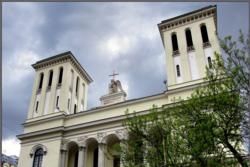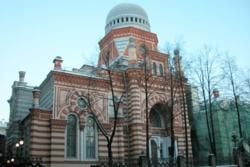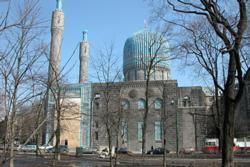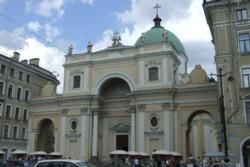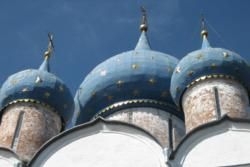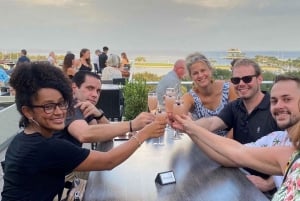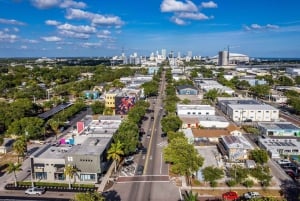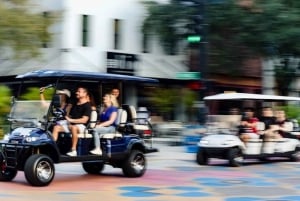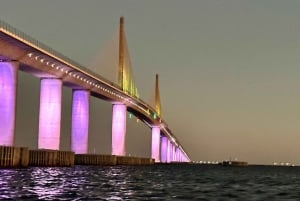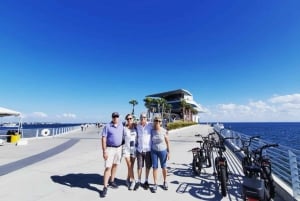Religion and Places of Worship
Banned for 70 years under the Soviets, the collapse of the USSR saw organized religion suddenly return to a place of prominence within Russian society. Churches and temples which had been destroyed were reconstructed again from scratch, others which had been turned into potato stores, swimming pools, or warehouses were restored to their former glory. The country has identified four religions which it considers of historical importance, namely Christianity, Judaism, Islam, Buddhism, and there are pockets of paganism to be found across the vast expanse of the country. Russian Orthodoxy is the closest there is to a state religion, but given its location close to Europe and the prevalence of foreign visitors for centuries, St Petersburg, perhaps more than most large Russian cities, also has thriving communities of Catholic and Lutheran communities too. English language TV channel Russia Today (RT) recently featured a number of the churches which were built along Nevskiy prospekt for the city's foreign congregations, follow this link to watch the clip:
Russian Orthodox
Within Christianity, the Orthodox Church (known by its Russian language initials RPTs) is very much first among equals, having approximately 150 million adherents around the world and counting approximately 75% of the Russian population as followers. Since 2009 the church has been headed by the Moscow-based Most Holy Patriarch of Moscow and All Russia Kyrill (to give him his full title), following of the death of his predecessor Aleksey II. Services are conducted in an early version of Slavonic called Old Church Slavonic, which sounds to Russian ears what Chaucerian English might to a native English speaker. Since 1991, millions of dollars have been spent restoring and building churches and chapels throughout the country, financed by various state agencies and the Church's trading in tobacco and alcohol. There are periodic rumours that the church will become an established, or state-backed religion, although these are usually denied heatedly. What is clear is that there has recently been a deliberate blurring of religious and nationalist causes which helps to promote the church's traditional views in a rampantly secular and consumerist society, allows the current regime to establish its nationalist credentials, and serves to bind church and state ever more closely together.
The church follows the Julian calendar, which means that major events in the Christian calendar such as Christmas and Easter are usually at different times than held in the west. Orthodox Christmas is held on January 7, while the date of Easter varies according to the year and occasionally coincides with western Easter. The interior of most Russian churches is dark and warm, dimly lit by flickering candles, and the walls are usually covered by row upon row of icons in front of which believers light candles and pray. Music is provided by the celebrants, supported by a choir, but otherwise there is no instrumental accompaniment. The altar is hidden behind an iconostasis, or wall of icons, behind which the priest and deacons conduct the service. Icons and bells are considered holy, and there is a large number of rituals which you are unique to the faith. Services are much longer than most other Christian services, and can easily last three or more hours. There are typically no seats for the congregation, so as a result it is quite common for people to come and go during the service, lighting candles, popping outside for some fresh air and a chat or a cigarette, rather than stay standing in one spot the whole time. Descriptions of church services in 19th century Russian literature show that the ceremonies held today have changed little or at all since those days.
There are many Orthodox churches throughout the city (too many to list here), including some of the historical monuments which double as museums such as Kazansky sobor and St Isaac's. Due to the prominence of Orthodoxy within Russian history and soceity, visiting a church service should be considered a 'must do', but please dress modestly (see the section What to Wear), remain discreet, and be conscious that this is an active place of worship rather than a tourist venue. In some churches it is considered rude to exit with your back to the altar, and therefore you are expected to back out while still facing the altar. For many, the atmosphere, smells of candle wax and incense, and atmospheric singing will be a highlight of any visit to St Petersburg.
Roman Catholic
The oldest Roman Catholic church in the centre of St Petersburg, St Catherine of Alexandria's, was built between 1762 and 1783 on Nevsky prospekt and is notable for having once contained the tomb of one-time favourite of Empress Catherine the Great and the last Polish king, Stanislas II (the body was returned to Poland in 1938). The church survived the communist period as a warehouse, but has now been fully restored to its former glory. Masses are held in Russian, Polish and English, and exact times can be found by visiting the parish website. Some other Catholic churches in the city are marked on the map below.
Lutheran
The Lutheran Church of St Peter and St Paul, located on Nevsky prospekt, is often called the German church reflecting its foundation by the local German community. The school attached to it is the oldest school in the city, still referred to as Peterschule but now known by its more prosaic title of school Number 22. The current building dates from the 1830s, and is built in the Romanesque style. During the Soviet period it was turned into a swimming pool but has since been restored as a church. Details of services can be found at the parish website. The earliest non-Orthodox church built in the city was the Evangelical Lutheran Church of St Katerina, first built in 1703 (the year the city was founded) although the current incarnation dates only from the late 19th century. It is adjacent to the Swedish consulate and usually referred to as 'the Swedish church'. Services are held in Swedish and Russian, and the local Anglican and Korean communities also use it for as their place of worship. The Evangelical Lutheran Church of St Mary was the spiritual home of the city's Finnish community, and services are still held here regularly in Finnish and Russia. The building dates from 1805.
Jewish
Tucked away behind the Mariinsky Theatre is the Bolshaya Khoralnaya, or Grand Choral Synagogue, the traditional center of Jewish worship in the city. Permission was given by Tsar Alexander I to build a synagogue in the then capital in the 1860s, and the current Moorish-style building was fnished and consecrated in 1893. With room for some 1,200 worshippers, the synagogue community has nevertheless managed to operate almost continuously since, in spite of the 20th century's upheavals and turmoil and the threats of both Nazi and Soviet regimes. In the late 1980s and 1990s it was restored thanks in part to donations from private American donors. Today it is once again the centre of a thriving community. Full details of the fascinating history and activities can be found at the Synagogue's website.
Moslem
Construction of St Petersburg's only mosque was started in 1910, following the visit to the then capital of the Emir of Bukhara (in Uzbekistan). The design is based on the design of Tamurlane's 15th century Mausoleum in Samarkand, Uzbekistan. Today it is the center of worship for many of the Gastarbeiter, or seasonal workers who come to live and work in the city from Central Asia and the Caucasus.


